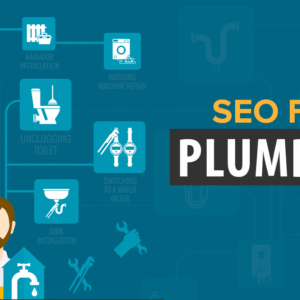
Recent Posts
7 Marketing Functions: Top Strategies for Business Growth
- May 9, 2025
- 2:47 pm
- Admin

Marketing is the very foundation of any business’s success. It’s not that they are just sold products; it is about the needs of consumers being understood, solutions should be created that the consumers find valuable, and a brand’s strategic positioning in the market should be done. The seven marketing functions define the foundational aspects of any prosperous company, which are the need to satisfy the demands of consumers through products, the need to entice potential buyers to pay for the products, and the need to create promotions to increase sales.
Whether you’re a new startup or an old-school brand, mastering these marketing functions can mean the difference between your company being stagnant and your growth being explosive. Let’s dissect them one after another.
1. Product Development: Markerting Functions Creating What Customers Want
Product development is a critical marketing function operation. Firms must develop products that solve real problems or satisfy desires.
Primary Strategies for Productive Development:
Market Research: Analyze the customer’s pain points to identify market gaps.
Prototyping & Testing: Custom-designed products before a full-scale market adoption.
Lifecycle Management: Never cease to work on products if you want to be competitive.
For example, Apple’s iPhone succeeds because it meets the changing consumer needs of tech. Even the finest promotions will not save the day without strong product development.
2. Marketing Functions Research: Understanding Consumer Needs
Good marketing starts with market research.
- Surveys for customers provide direct feedback.
- Qualitative information is to be sought using focus groups.
- Statistical analysis to monitor buying angles.
- Study of the behavior of consumers in a real-world setting.
- With the medium of market research, firms are empowered to make products based on customer needs, pitch their prices competitively, and design targeted promotional campaigns.
Pricing Strategy: Balancing Profit and Appeal
Pricing is not so much about responding to needs as it is about psychological pressures.
A good pricing strategy can classify a product as premium or low-cost.
Common Pricing Models:
Cost-Plus Pricing: This provision is an addition to the production costs markup.
Value-Based Pricing: Prices are determined by assessing what the customer values in the product.
Competitive Pricing: Matches or undercuts rivals’ prices.
Contrary to Walmart, which employs competitive pricing to attract cost-conscious shoppers, brands such as Rolex apply value-based pricing schemes.
3. Promotion in Marketing Functions: Driving Awareness and Sales
Marketing Promotion includes advertising, PR, social media, and sales tactics. Effective Promotion Techniques:
Content Marketing: Blogs, videos and infographics that educate and entertain.
Social Media Ads: Here, best practices are focused on campaigns on Instagram and LinkedIn, among other sites.
The “Just Do It” example from Nike is a wonderful example of powerful marketing promotion—it sells and inspires.
4. Distribution Channels: Getting Products to Customers
Even the best product will be unsuccessful if people aren’t able to access it.
Types of Distribution Channels:
Direct (B2C): Your site/retailer.
Indirect (B2B): Using wholesalers, retailers, or Amazon.
Hybrid: Combining both
Tesla had begun with direct distribution, which did away with dealers so that there was control of the branding and pricing of the vehicles.
5. Market Research: Understanding Customer Needs
Marketing functions is guesswork without insights. Marketing function research reveals trends, preferences, and competitors’ moves.
Research Methods:
Surveys & Polls: Quick customer feedback.
Focus Groups: In-depth discussions with target audiences.
Data Analytics: Monitoring online activity using tools such as Google Analytics.
Netflix employs data-driven research to recommend shows and even produce hit series like Stranger Things.
6. Selling: Converting Leads into Customers
Selling is the terminal of the marketing functions process. Various selling tricks adopted by the businesses include, among others:
Consultative Selling …diagnose customer needs and then present solutions.
Relationship– creating long-lasting relationships with customers.
Selling Persuasively – Marketing of the products through effectively identifying the products’ benefits.
A good sales tactic sets the marketing position to generate revenue.
Financing: Fueling Marketing functions Efforts
Marketing function campaigns need budgets. Smart financing ensures that the money is used where it will bring the most ROI.
Budgeting Tips
- ROI Tracking
- Measure the performance of the best-performing campaigns.
- Flexible Spending
- Shift budgets toward high-performing channels.
- Cost-Effective Tactics
Engage in organic growth on social media before spending significant ad money.
Regarding early marketing, startups usually bootstrap it, while the big brands invest millions in Super Bowl ads.
7. Customer Relationship Management (CRM): Keeping Buyers Loyal
It’s expensive to sell to consumers; it’s cheap to retain them. CRM, in return, develops marketing functions for long-term loyalty because it addresses clients in a personalised manner.
CRM Strategies:
Email Marketing: Sending tailored offers and updates.
Loyalty Programs: Prizes for repetitive purchases (e.g. Starbucks Rewards).
Customer Support: Fast, effective resolution of problems.
Amazon’s recommendation system encourages shoppers to return to the store by offering products related to what they last purchased.
Conclusion: Mastering the 7 Marketing Functions
The seven marketing functions begin with product development and end with customer retention.
Excellent pricing strategy, promotion in marketing, and channel distribution lead companies to outperform their competitors.
The seven functions of marketing are indispensable for business success. By combining elements such as market research, product development, pricing strategy, promotion, distribution channels, selling, and financing, businesses can develop a strong marketing strategy that will stimulate growth. Awareness and strategic use of these functions can allow a business to be in the game and survive in today’s volatile world.
Frequently Asked Questions Concerning the 7 Marketing Functions
Q1. Explain the seven roles of marketing Functions?
The seven marketing functions are essential business processes that any business endeavors to pursue to promote, spread, and dispose of their products. They include:
Market Research – Getting to know the customers’ needs and preferences.
Product Development: Create and refine products.
Pricing Strategy – Competitive pricing.
Promotion in marketing – Advertising and awareness of the brand.
PR – Product availability control through channels.
Sales – changing leads into customers.
Finance – How to determine the marketing budget.
Q2. We ask – why are the functions of marketing critical for business?
Each function ensures the business can reach its target audience, design desirable products, and remain profitable. Strategically, they make the company grow and be competitive.
Q3. How does the market research influence other marketing functions?
Market research helps businesses gather information on consumer preferences, industry trends, and competitors. These insights are used to develop products, price them, develop promotional strategies, and develop a distribution plan.
Q4. What are some common strategies used in pricing within the marketing sphere?
Businesses use a variety of pricing strategies as follows:
Penetration pricing: attempting to undercut prices to increase the number of customers.
Premium pricing—higher price for high-quality products.
Value-based pricing—brands award products at prices that customers value.
Competitive pricing—parity or lower than the competitive prices.
Q5. How is promotion in marketing good for businesses?
Promotion increases the brand’s publicity, attracts future customers, and stimulates sales. Standard promotional techniques are: marketing officials, social media marketing, influencer partnerships, and email campaigns.
Guest Post Innovators, a leading digital marketing agency, delivers comprehensive digital marketing services
Recent Posts









